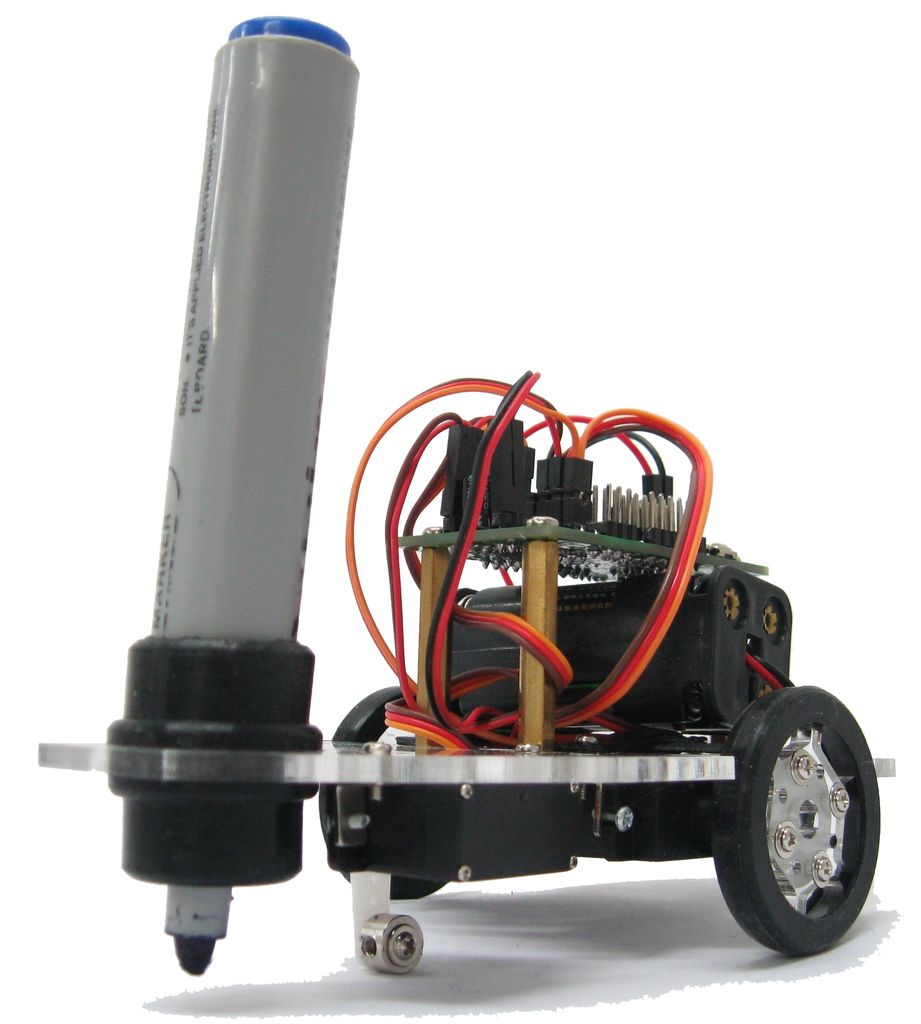A large, full colour manual is included to make assembly easy. The manual can be downloaded from here: https://sites.google.com/site/daguproducts/home/instruction-manuals. This instructable supplements the manual with additional colour photos and text to show the easiest way to assemble the robot.
There is a tutorial for creating font, symbols and pictures here: http://www.instructables.com/id/How-to-draw-pictures-and-create-fonts-using-the-Do/
Step 1: Check your parts

Step 2: Assemble your wheels
Step 3: Adding mounting brackets to your motors
The kit includes 6x 90° angle brackets (part #9) for mounting your motors and 2 sizes of M2 screws (5mm & 8mm). For this step we need six M2x5mm screws (part #11). Use the printed ruler to check the screw size.
As these motors have mounting slots rather than holes it is easier to partially insert our screws into the 90° brackets first. Then slide the bracket into the motor mounting slot and gently tighten the screws. You only need to tighten the screws a small amount.
Pay careful attention to the way the brackets are mounted as there is a left and a right motor plus the servo only mounts on the left side of the body.
Step 4: Mounting the motors and encoder sensors on the base
The easiest way to mount the left and right motors is to start with a single M2x8mm screw (part #14) passing through a fiberglass strip (part #25), through the base plate (part #1) and into the motor mounting bracket (part #9) on the other side. Do not tighten the screw yet!
While the screw is loose, slide your sensor under the strip as shown and then add your second M2x8mm screw. Align the sensor so it sits directly above the output shaft of the motor and gently tighten the mounting screws until the fiberglass strip bends slightly. Repeat these steps for the other motor.
At this point you can also mount the servo (part #6) using the last two M2x5mm screws.
Step 5: Mounting the wheel encoder magnets
Each wheel is fitted with an 8-pole magnet (part #22). This magnet has 4x north poles and 4x south poles. As the wheel spins, the magnetic sensor detects the changes in the magnetic field to give 8 counts per revolution of each wheel. The robot uses these to measure distance traveled and could even measure it’s speed with them if necessary.
For more detail: Building a Doodle Bot kit from DAGU

